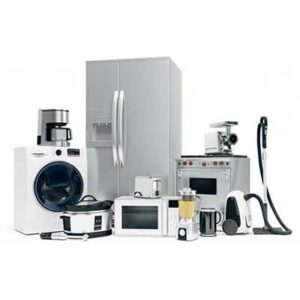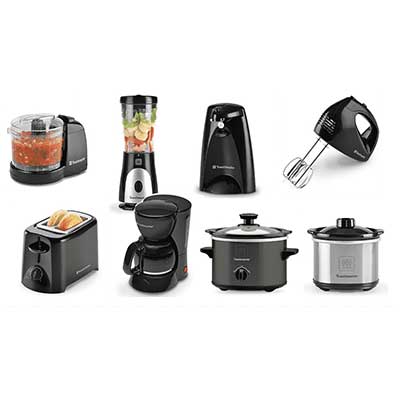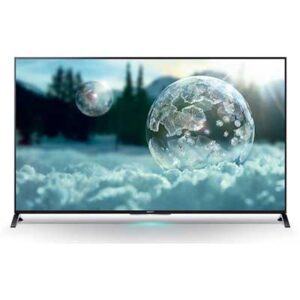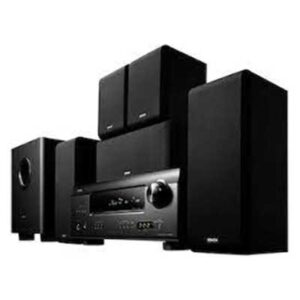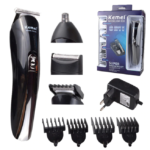Everything You Need To Know About Split AC Leave a comment
When it comes to battling the blazing heat of summer, nothing comes close to the comfort afforded by a split AC.
Split ACs have grown more popular owing to their efficiency, elegant appearance, and simplicity of installation.
In this post, we will dig into the realm of split AC and cover all you need to know about these cooling systems.
What Is A Split AC?
A Split AC, also known as a ductless or mini-split system, is a cooling device that consists of two primary components: an inside unit and an outside unit.
The indoor unit is situated within the room, while the outdoor unit is commonly fixed on an outside wall or set on the ground outside the structure.
These two units are linked by a refrigerant line and electrical cabling, enabling them to perform harmoniously to chill the interior area effectively.
How Does A Split AC Work?
The operation of a Split AC requires a process of refrigeration and heat transmission. The compressor in the outside unit compresses the refrigerant gas, elevating its temperature and pressure.
The high-pressure gas then travels via the refrigerant line to the interior unit, where it expands into a low-pressure, low-temperature gas.
This mechanism takes heat from the inside air, cooling it down. The cooled air is then cycled back into the room, giving a pleasant atmosphere.
Advantages Of Split AC
Split AC comes with several benefits that make them a top option for cooling solutions in residential and commercial areas. Some of the primary advantages include:
- Energy Efficiency
Split ACs are very energy-efficient, resulting in decreased power costs and a smaller carbon imprint.
- Zone Cooling
Split ACs enable for separate temperature adjustment in various rooms, offering individualised comfort.
- Easy Installation
As the name implies, split AC needs no ductwork, making installation fast and hassle-free.
- Quiet Operation
The indoor unit’s noiseless operation offers a quiet atmosphere, free from annoying noises.
Improved Air Quality
Many split AC units come with innovative filters that assist cleanse the interior air, supporting improved respiratory health.
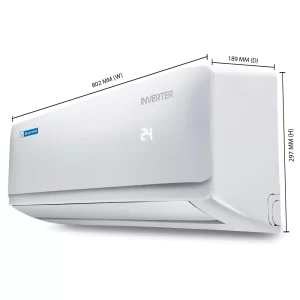
Disadvantages Of Split AC
While split ACs provide various benefits, it is crucial to examine their negatives before making a buying choice. Some of the downsides include:
- Initial Cost
The initial cost of acquiring and installing a split AC might be greater compared to regular AC systems.
Professional Installation Required
To guarantee best performance, it is necessary to have the split AC installed by a professional technician.
- Limited Cooling Capacity
In bigger locations, a single split AC could not offer adequate cooling, needing additional units.
- Outside Space Constraints
Installing the outside unit may need careful consideration of available space and aesthetics.
Choosing The Right Split AC For Your Space
Selecting the appropriate split AC for your area entails examining numerous criteria such as room size, cooling capacity, energy efficiency ratings, and other amenities. Follow these steps to make an educated decision:
- Assess Your space Size
Measure the size of the space you wish to cool to estimate the proper cooling capacity necessary.
- Energy Efficiency Ratings
Check the AC’s Energy Efficiency Ratio (EER) and Seasonal Energy Efficiency Ratio (SEER) to guarantee energy-efficient operation.
- Extra Features
Explore extra features like smart controls, customizable timers, and sleep modes for enhanced convenience.
- Brand and Warranty
Choose recognised brands with solid warranty coverage to offer long-term peace of mind.
Installation Process Of Split AC
While expert installation is suggested, it’s vital to understand the general processes involved in setting up a split AC:
- Selecting the Installation placement
Identify the ideal placement for the interior unit and the outside compressor to enhance cooling efficiency.
- Drilling and Mounting
Drill holes to link the interior and outdoor devices and attach both firmly.
- Connecting Refrigerant Lines
Ensure appropriate connections of the refrigerant lines between the two units.
- Electrical Wiring
Complete the electrical connections between the inside and outdoor equipment.
- Testing and Commissioning
After installation, the technician will carefully test the AC to verify correct operation.
Maintenance And Cleaning Tips For Split AC
Regular maintenance is vital to keeping your split AC functioning smoothly and increasing its lifetime. Follow these maintenance tips:
- Clean or change Filters
Regularly clean or change filters to minimise dust and debris accumulation, which may limit cooling effectiveness.
- Clean the outside Unit
Remove any dirt or plants surrounding the outside unit to preserve adequate ventilation.
- Check for Refrigerant Leaks
Schedule expert inspections to check for refrigerant leaks and fill up the refrigerant if required.
- Schedule Annual service
Arrange annual service by a certified technician to handle any possible concerns and ensure maximum performance.
Energy Efficiency And Cost Savings Split AC
Split ACs are recognised for their energy efficiency, which translates into considerable cost savings in the long term. To enhance energy efficiency:
- appropriate Temperature Settings
Set the AC temperature at an appropriate setting, neither too low nor too high, to strike a balance between comfort and efficiency.
- Utilise Smart Controls
Take advantage of smart features and programmable timers to tune cooling depending on occupancy and consumption patterns.
- Ensure Proper Insulation
Properly insulate your space to limit heat input and loss, supporting the AC’s cooling efforts.
- Frequent Maintenance
As indicated before, frequent maintenance ensures the AC performs at optimal efficiency, decreasing energy usage.
Common Issues And Troubleshooting
Like any device, split ACs may suffer occasional difficulties. Here are some frequent difficulties and troubleshooting tips:
- Inadequate Cooling
Check and clean the filters, guarantee correct insulation, and check that the AC size fulfils the room’s needs.
- Water Leakage
Inspect the drain line for clogs and ensure appropriate drainage.
- Unusual Noises
Check for loose components and tighten any screws or nuts.
- Foul Odours
Clean or replace the filters, and ensure adequate drainage to avoid mould and bacteria development.
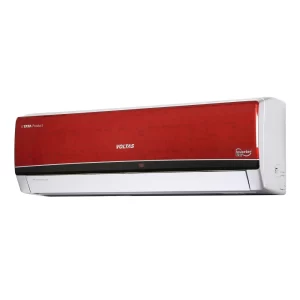
Tips For Improving Split AC Performance
To boost the performance of your split AC and prolong its lifespan:
- Keep Doors and Windows Closed
Minimise exterior heat penetration by keeping doors and windows closed while the AC is operating.
- Use Ceiling Fans
Supplement the AC’s cooling with ceiling fans to circulate cool air more efficiently.
- Avoid Direct Sunlight
Use drapes or blinds to avoid direct sunlight, minimising the heat load on the AC.
- Regularly Clean outside Unit
Keep the outside unit clean and free from debris for optimum heat exchange.
Conclusion
In conclusion, split air conditioners has transformed the way we cool our interior areas. With its energy efficiency, convenience of installation, and innovative features, split ACs have become a popular option for both home and commercial applications.
To get the most out of your split AC, follow the maintenance guidelines, consider energy-saving measures, and investigate the newest environmentally friendly solutions available in the market.
FAQs About Split AC
Q: How long does a split AC last on average?
A: With adequate care, a well-installed split AC may last between 10 to 15 years.
Q: Can I install a split AC on my own?
A: While DIY installation is feasible, professional installation is suggested for best performance and safety.
Q: Are split ACs acceptable for huge spaces?
A: For big spaces, numerous split ACs or central air conditioning may be more effective.
Q: Do split ACs dehumidify the air?
A: Yes, split ACs have a dehumidifying effect, decreasing interior humidity levels.
Q: Can a split AC be used for heating as well?
A: Some split AC machines come with heating capabilities, acting as both a cooling and heating option.

